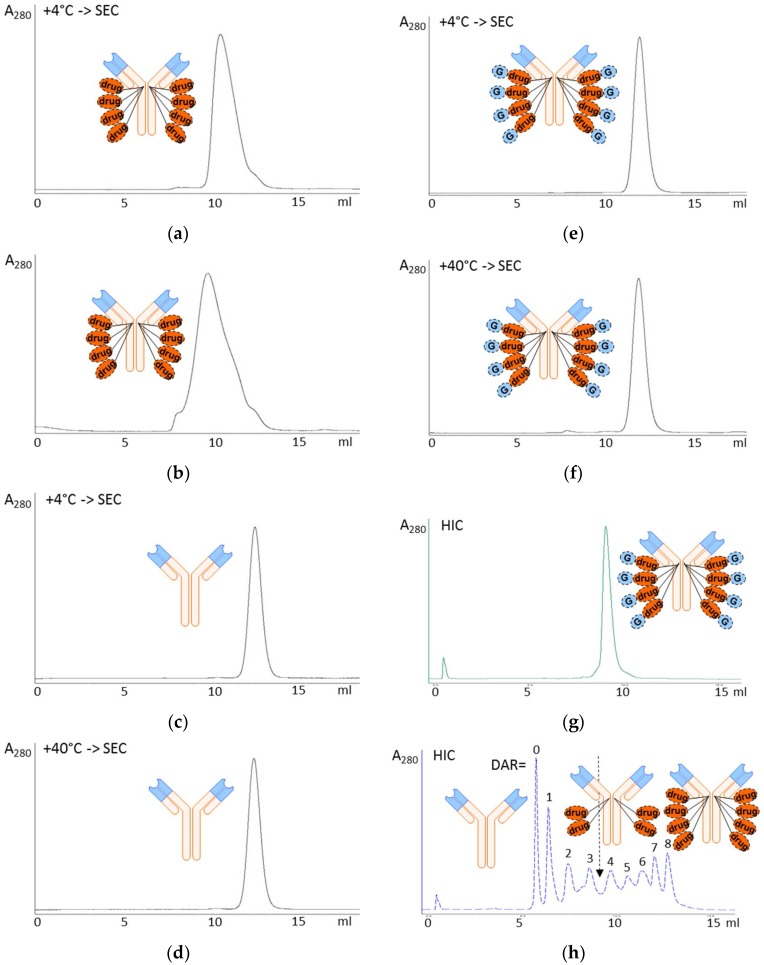Figure 2.
Chromatographic evaluation of ADC aggregation and hydrophilicity. (a–f) Aggregation was analyzed by size-exclusion chromatography (SEC) after two days’ storage at +4 °C (normal storage temperature) or +40 °C (temperature stress) in formulation buffer. (a,b) DAR = 8 trastuzumab MMAE ADC was moderately aggregated into HMWCs already at +4 °C in two days (a) and mostly (>95%) aggregated at +40 °C eluting as a broad peak between 7–12 mL (b). (c,d) Trastuzumab, the naked antibody control, was not aggregated at either +4 °C (c) or +40 °C (d) during storage and eluted at 12.1 mL. (e,f) DAR = 8 MMAU ADC was not aggregated at +4 °C eluting at 11.9 mL (e) and only 2% aggregated into high-molecular weight components (HMWCs) eluting at 7–8 mL at +40 °C (f). (g,h) Hydrophobic interaction chromatography (HIC) was performed for evaluating the relative hydrophilicity of DAR = 8 trastuzumab-MMAU ADC (g); and a standard mixture of the naked antibody trastuzumab as well as trastuzumab-MMAE ADCs with DAR = 1–8 constructed from reduced trastuzumab using standard MC-Val-Cit-PABC linker (h). The method separated the molecules in the order of relative hydrophobicity, with the most hydrophilic component (naked antibody) eluting first and the most hydrophobic component (DAR = 8 ADC) eluting last. DAR = 8 MMAU ADC eluted at position corresponding to DAR = 3–4 MMAE ADC. Detection was by absorbance at 280 nm. drug, MMAE; G, β-D-glucuronic acid glycoside.

